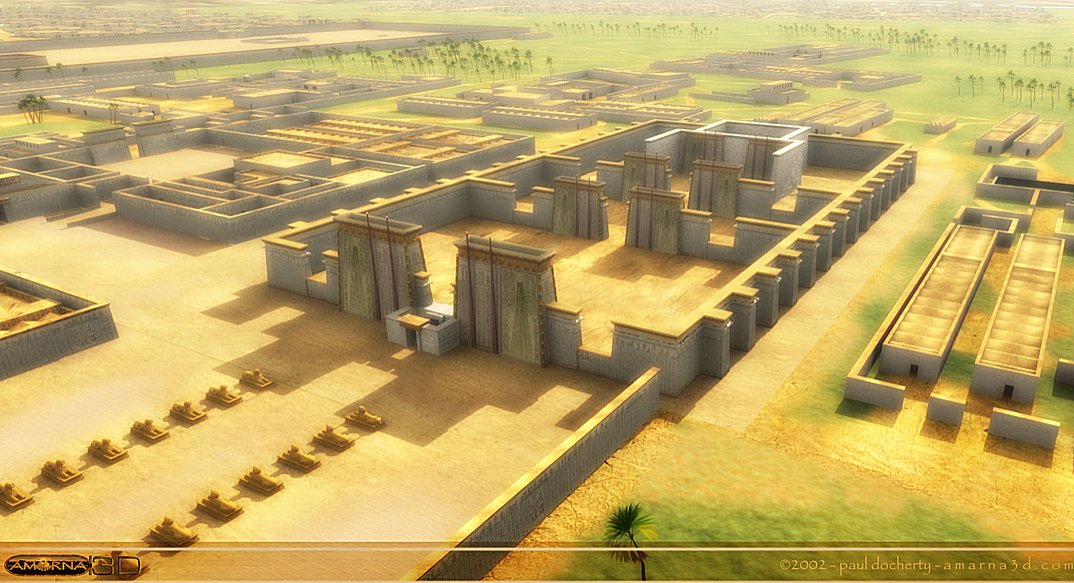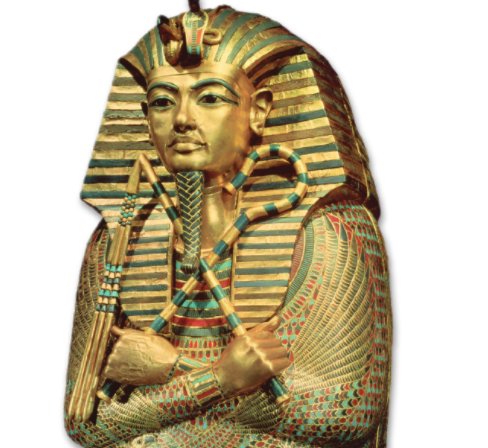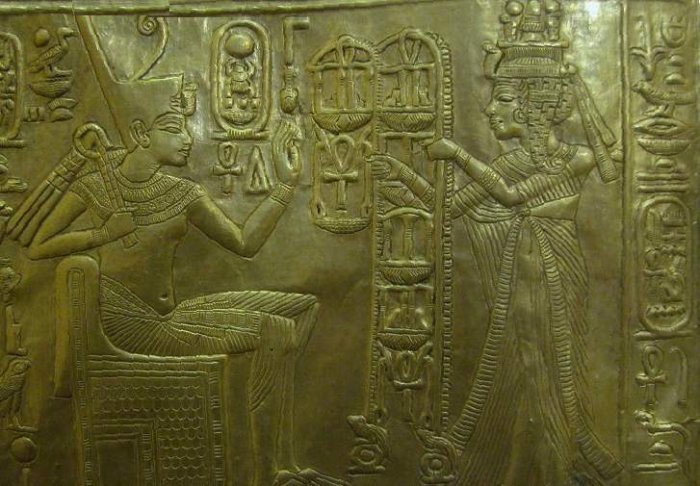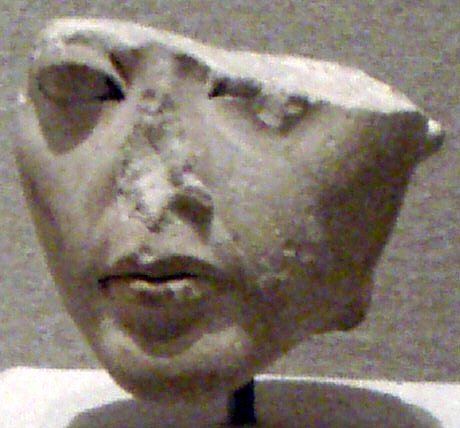Ankhesenamun – Mysterious Death Of Tutankhamun’s Wife Ended The True Amarna Bloodline
Ellen Lloyd - AncientPages.com - As a daughter of Egyptian queen Nefertiti and Akhenaten, one of the most famous rulers in the Land of Pharaohs, one would expect Ankhesenamun to enjoy a comfortable life.
Unfortunately, Ankhesenamun was born around 1348 B.C., during a troubled time period in the history of Egypt due to the unprecedented religious revolution in the country and her life was full of sorrow.
Historians are still trying to figure out what caused her mysterious death and why she vanished from historical records.
Left: Queen Ankhesenamun presents lotus flowers to Tutankhamun. From an ivory box from Tutankhamun's tomb. Right: Statues of Tutankhamun and Ankhesenamun. Credit: Wikimedia Commons
Who Was Ankhesenamun?
Born as Ankhesenpaaten, the young girl grew up in her father's new capital city of Akhetaten, present-day Amarna. She was the third of six known daughters of Pharaoh Akhenaten and his Great Royal Wife Nefertiti.
Pharaoh Akhenaten and Queen Nefertiti were both controversial individuals. They broke tradition and caused a religious revolution, in which they worshiped one god only, Aten, or the Sun Disc. Pharaoh Akhenaten eliminated all signs related to the Amun-Re cult. He withdrew funding from all temples of “false gods.” Taking money and power away from the very powerful and wealthy priestly class created chaos, discontent, and protests.
Pharaoh Akhenaten’s Tell el-Amarna (or simply Amarna) was the short-lived capital built by the ‘heretic’ Pharaoh Akhenaten and abandoned shortly after his death (c. 1332 BCE).
Reconstruction of Amarna and the Temple which was close to the Pharaoh’s quarters on the left. Credits: Paul Docherty Principal Lecturer in 3D CG Teesside University
Ankhesenpaaten’s name was later changed to Ankhesenamun. Her name means "She lives through Amun" (or "Living through Amun"). The change in her name reflects the changes in ancient Egyptian religion during her lifetime after her father's death.
Ankhesenamun Married Her Half-Brother Pharaoh Tutankhamun
Incest was common and not considered wrong in ancient Egypt. Egyptians believed that it was possible to preserve the royal bloodline by marrying a sister or daughter. It is believed that Ankhesenamun was first married to her own father Akhenaten. Some Egyptologists maintain that she was also married to Smenkhkare, a pharaoh who only reigned for one year. However, this claim is disputable because historians still don’t know whether Smenkhkare was male or female during the Amarna period.
Detail of the second coffin of Tutankhamun. Credit: Museum of Egyptian Antiquities, Cairo, Egypt.
After the death of Pharaoh Akhenaten, Ankhesenamun, who was only 13-year-old married her half-brother Pharaoh Tutankhamun. The couple appears to have had two miscarried daughters. The remains of their children were discovered in Tutankhamun’s tomb. One was no more than five months, and the other was between 7-8 months.
If these daughters had lived, they would eventually have taken the place of Queen Ankhesenamun, continued the Amarna bloodline, and changed the history of ancient Egypt. However, this did not happen, and life had more unpleasant surprises for poor Queen Ankhesenamun.
From the shrine of Tutankhamen's tomb. Credit: Wikimedia Commons
When Pharaoh Tutankhamun died at the age of 18, his wife found herself in a very difficult situation, surrounded by much older, ambitious men.
Queen Ankhesenamun’s Desperate Letter To The King Of The Hittites And The Murder Of Her Future Husband
Queen Ankhesenamun wanted to continue the royal bloodline of Amarna and wrote a desperate letter to Suppiluliumas I, the King of the Hittites. A copy of the letter was found during excavations at Hattusa in Turkey. She explained her situation, said that she had no sons, and asked the king if he could send her a husband to continue the royal bloodline.
Suppiluliumas I was suspicious and sent messengers to check her story. When he learned Queen Ankhesenamun had told him the truth, Suppiluliumas I sent Zannanza, a Hittite prince to Egypt to take up the queen’s offer. The Hittite prince did not even reach the border before he was murdered.
Queen Ankhesenamun ‘s Mysterious Death
Left without options, Ankhesenamun was now in the hands of those who decided her fate. Queen Ankhesenamun had to marry the late Pharaoh Tutankhamun’s advisor, Pharaoh Ay, a union she strongly opposed. Archaeologists have discovered a ring that shows she did marry Pharaoh Ay, but the strange aspect of this story is that she suddenly vanished shortly after.
Amarna era statuette head is thought to represent Ankhesenamun, sister, and wife to Tutankhamun. Credit: Keith Schengili-Roberts - Public Domain
Queen Ankhesenamun died under mysterious circumstances somewhere between 1325 B.C and 1321 B.C. Was she murdered by Pharaoh Ay, who was also responsible for the death of the Hittite prince Zannanza?
Equally puzzling is that on the walls of Pharaoh Ay's tomb, archaeologists found the name Tey, the wife of Ay and the wet nurse of Queen Nefertiti.
Queen Ankhesenamun’s name is not mentioned at all. It was as if she had been erased from history. Was it a deliberate act?
Has Queen Ankhesenamun’s Tomb Been Found?
The location of Ankhesenamun’s burial place has long been a historical mystery, but this may change soon. As Ancient Pages reported earlier, scientists announced in January 2018 that it's very possible her tomb is located somewhere in the Valley of the Kings near Luxor. Archaeologists have located a tomb, but it’s still uncertain who it belongs to.
If the remains of Ankhesenamun, Tutankhamun’s wife, can be found, Egyptologists may finally learn what happened to Egypt’s lost queen, whose life was full of misery.
Updated on September 8, 2023
Written by Ellen Lloyd – AncientPages.com
Copyright © AncientPages.com All rights reserved. This material may not be published, broadcast, rewritten or redistributed in whole or part without the express written permission of AncientPages.com
Expand for referencesMore From Ancient Pages
-
 Rare Gilded Mask Discovered On Mummy Of Ancient Egyptian Priest Serving Sky Goddess Mut
Archaeology | Jul 17, 2018
Rare Gilded Mask Discovered On Mummy Of Ancient Egyptian Priest Serving Sky Goddess Mut
Archaeology | Jul 17, 2018 -
 Large Pre-Columbian Pyramid Discovered Under Highway In Mexico But It Will Not Be Excavated
Archaeology | Dec 16, 2024
Large Pre-Columbian Pyramid Discovered Under Highway In Mexico But It Will Not Be Excavated
Archaeology | Dec 16, 2024 -
 Skeleton Of Last Trojan Discovered – Ancient City Of Troy May Have Been A Religious Sanctuary – Archaeologists Say
Archaeology | Sep 21, 2018
Skeleton Of Last Trojan Discovered – Ancient City Of Troy May Have Been A Religious Sanctuary – Archaeologists Say
Archaeology | Sep 21, 2018 -
 Peaches Spread Across North America Through The Resourceful Networks Of Indigenous Communities
Archaeology | Nov 25, 2024
Peaches Spread Across North America Through The Resourceful Networks Of Indigenous Communities
Archaeology | Nov 25, 2024 -
 How And When Did Ancient People Start Using Oil?
Ancient History Facts | Jun 28, 2018
How And When Did Ancient People Start Using Oil?
Ancient History Facts | Jun 28, 2018 -
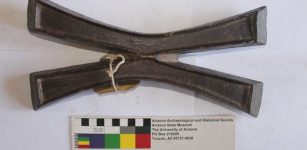 Copper Artifacts Reveal New Cultural Connections In Southern Africa
Archaeology | Mar 23, 2023
Copper Artifacts Reveal New Cultural Connections In Southern Africa
Archaeology | Mar 23, 2023 -
 Prehistoric Brits Used Rare Rock Crystals To Mark Burial Sites – New Study
Archaeology | Aug 10, 2022
Prehistoric Brits Used Rare Rock Crystals To Mark Burial Sites – New Study
Archaeology | Aug 10, 2022 -
 Lost World Of Doggerland: Parts Of Britain’s Sunken Stone Age Atlantis Discovered
Archaeology | Jul 4, 2012
Lost World Of Doggerland: Parts Of Britain’s Sunken Stone Age Atlantis Discovered
Archaeology | Jul 4, 2012 -
 Legend Of The Sun And Moon In Cherokee Beliefs
Featured Stories | Jul 9, 2019
Legend Of The Sun And Moon In Cherokee Beliefs
Featured Stories | Jul 9, 2019 -
 Ancient Roman Government Structure And The Twelve Tables
Ancient History Facts | Jan 18, 2016
Ancient Roman Government Structure And The Twelve Tables
Ancient History Facts | Jan 18, 2016 -
 Evidence Of Millennia-Old Textile Manufacture And Rare Ancient Eagle-Bone Pin Discovered In Oxfordshire
Archaeology | Jun 13, 2023
Evidence Of Millennia-Old Textile Manufacture And Rare Ancient Eagle-Bone Pin Discovered In Oxfordshire
Archaeology | Jun 13, 2023 -
 Murder Of Bardiya: Son Of Cyrus The Great And The Riddle Of The Impostor
Historical Figures | Dec 7, 2018
Murder Of Bardiya: Son Of Cyrus The Great And The Riddle Of The Impostor
Historical Figures | Dec 7, 2018 -
 Tiny Paper Scraps From ‘Queen Anne’s Revenge’ Shed Light On Reading Habits Of Blackbeard’s Pirates
Archaeology | Jan 7, 2018
Tiny Paper Scraps From ‘Queen Anne’s Revenge’ Shed Light On Reading Habits Of Blackbeard’s Pirates
Archaeology | Jan 7, 2018 -
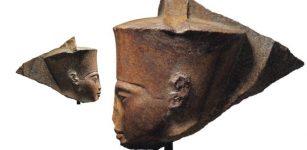 Egypt Calls On Christie’s Auction House In London To Stop Sale Of Tutankhamun Statue Head
Archaeology | Jun 14, 2019
Egypt Calls On Christie’s Auction House In London To Stop Sale Of Tutankhamun Statue Head
Archaeology | Jun 14, 2019 -
 Ancient Jaintia Kingdom And The Garden Of Monoliths And Dolmens
Featured Stories | Nov 8, 2016
Ancient Jaintia Kingdom And The Garden Of Monoliths And Dolmens
Featured Stories | Nov 8, 2016 -
 Soap Was Invented In 2800 B.C By Babylonians
Ancient History Facts | Jun 17, 2016
Soap Was Invented In 2800 B.C By Babylonians
Ancient History Facts | Jun 17, 2016 -
 Humans Lived In Rainforests At Least 150,000 Years Ago In Africa
Human Beginnings | Feb 27, 2025
Humans Lived In Rainforests At Least 150,000 Years Ago In Africa
Human Beginnings | Feb 27, 2025 -
 Laocoon – A Trojan Priest Who Offended The Gods And Was Strangled By Sea Serpents
Featured Stories | Nov 15, 2021
Laocoon – A Trojan Priest Who Offended The Gods And Was Strangled By Sea Serpents
Featured Stories | Nov 15, 2021 -
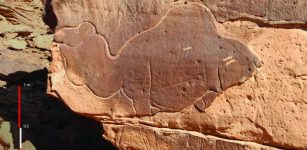 Huge Ancient Animal Sculptures Made By Unknown Carvers At Camel Site In Saudi Arabia Puzzle Archaeologists
Archaeology | Feb 14, 2018
Huge Ancient Animal Sculptures Made By Unknown Carvers At Camel Site In Saudi Arabia Puzzle Archaeologists
Archaeology | Feb 14, 2018 -
 New Details On Neanderthals – Revealed By Museum Exhibition In Norway
Archaeology | Jun 16, 2023
New Details On Neanderthals – Revealed By Museum Exhibition In Norway
Archaeology | Jun 16, 2023


